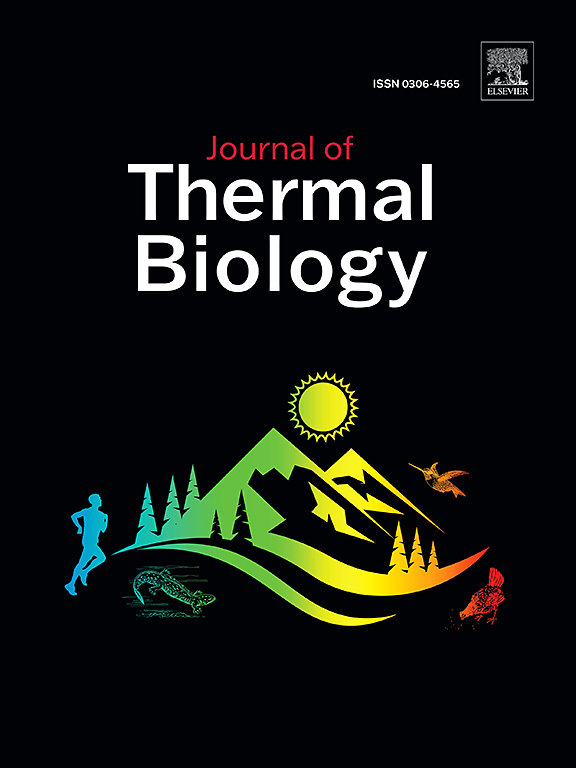Acclimation effects on thermal locomotor performance of the invasive Polyphagous Shot Hole Borer beetle, Euwallacea fornicatus (Coleoptera: Curculionidae: Scolytinae)
IF 2.9
2区 生物学
Q2 BIOLOGY
引用次数: 0
Abstract
The Polyphagous Shot Hole Borer (PSHB; Euwallacea fornicatus, Coleoptera: Curculionidae: Scolytinae) is an invasive and destructive tree pest. To assess whether thermal acclimation influences E. fornicatus locomotion performance (i.e., induced plastic responses) that may influence invasion potential, beetles were acclimated to three temperatures (18 °C, 25 °C, and 32 °C), and four locomotion traits were measured across six temperatures (13 °C, 18 °C, 23 °C, 28 °C, 33 °C and 38 °C) per acclimation group to construct thermal performance curves, capturing critical thermal minimum (Tmin), critical thermal maximum (Tmax), thermal breadth (Tbr), optimal performance rate (Umax). Substantial plasticity of performance curves was found in E. fornicatus. Generally, cold (18 °C) acclimation increased the thermal range of several locomotor performance traits without affecting performance levels, thereby supporting the colder-is-better hypothesis. To assess the consequences of these plastic responses, using the thermal performance curves established here, movement rates of E. fornicatus in an at-risk orchard area in South Africa were predicted across seasons while considering artificial warm and cold spells. Cold-acclimated beetles exhibited the highest cumulative distance traveled in both summer and winter, while warm-acclimated beetles had the lowest. Therefore, short-term thermal variation significantly influenced E. fornicatus locomotion performance, with cold acclimation notably improving dispersal across a wide range of thermal conditions. These findings highlight the importance of considering recent thermal history when predicting E. fornicatus invasion potential. By integrating these data with microclimatic conditions and functional models, this study offers valuable insights for predicting E. fornicatus spread, informing targeted management strategies, and refining spatially explicit risk assessments to mitigate the impacts of this invasive pest.
求助全文
约1分钟内获得全文
求助全文
来源期刊

Journal of thermal biology
生物-动物学
CiteScore
5.30
自引率
7.40%
发文量
196
审稿时长
14.5 weeks
期刊介绍:
The Journal of Thermal Biology publishes articles that advance our knowledge on the ways and mechanisms through which temperature affects man and animals. This includes studies of their responses to these effects and on the ecological consequences. Directly relevant to this theme are:
• The mechanisms of thermal limitation, heat and cold injury, and the resistance of organisms to extremes of temperature
• The mechanisms involved in acclimation, acclimatization and evolutionary adaptation to temperature
• Mechanisms underlying the patterns of hibernation, torpor, dormancy, aestivation and diapause
• Effects of temperature on reproduction and development, growth, ageing and life-span
• Studies on modelling heat transfer between organisms and their environment
• The contributions of temperature to effects of climate change on animal species and man
• Studies of conservation biology and physiology related to temperature
• Behavioural and physiological regulation of body temperature including its pathophysiology and fever
• Medical applications of hypo- and hyperthermia
Article types:
• Original articles
• Review articles
 求助内容:
求助内容: 应助结果提醒方式:
应助结果提醒方式:


